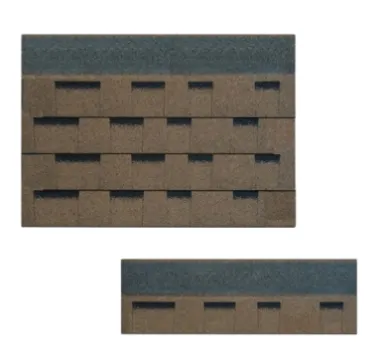
Th2 . 27, 2025 16:18 Trở lại danh sách
Sealing Edges and Seams for Leak-Free Roofing with Asphalt Shingles
Ensuring a secure and watertight roof begins with proper techniques for sealing edges and seams. Whether you’re working with types of shingles, asphalt shingles, or exploring methods for applying asphalt shingles or applying rolled asphalt roofing, attention to detail in sealing ensures long-lasting protection against water damage.

Types of Shingles and Their Unique Sealing Requirements
Each type of shingle has distinct sealing needs, making it essential to understand the material you’re working with.
-
Tấm lợp nhựa đường: Popular for their affordability and durability, these require a strong adhesive or roofing cement to seal edges effectively.
-
Wood Shingles: Often used for their aesthetic appeal, sealing must include water-resistant finishes to prevent rot.
- Rolled Asphalt Roofing: Ideal for low-slope roofs, requires precise sealing along seams to avoid water infiltration.
Asphalt Shingles: Key Techniques for Sealing Edges
Asphalt shingles are a favorite due to their ease of installation and water resistance, but proper sealing is crucial to their performance.
-
Overlapping Layers: Ensuring each layer overlaps the next prevents water from seeping beneath.
-
Roofing Cement Application: Apply a continuous bead of cement along edges to create a watertight seal.
- Secure Fastening: Use nails with waterproof caps to hold shingles in place while enhancing seal integrity.
Applying Asphalt Shingles: Step-by-Step Edge Sealing
When applying asphalt shingles, focusing on edges ensures a secure and leak-free finish.
-
Trim Excess Material: Cut shingles to fit the roofline, leaving a slight overhang.
-
Apply Roofing Cement: Spread a generous layer along the edge using a trowel.
-
Press and Align: Firmly press shingles into place, ensuring alignment with adjacent rows.
- Check for Gaps: Fill any visible gaps with additional roofing cement to prevent leaks.
Sealing Techniques for Rolled Asphalt Roofing
Applying rolled asphalt roofing involves unique challenges due to its large, continuous sheets.
-
Align Properly: Roll out the material evenly, ensuring straight seams.
-
Adhesive Application: Use a specialized adhesive or tar along the edges and seams before pressing the material into place.
-
Edge Overlap: Allow for a 2- to 4-inch overlap at seams, sealing with roofing cement for added security.
-
Inspect Regularly: Check edges and seams for signs of wear, especially after storms.
-
Clean Surfaces: Ensure the roof is free from debris before applying any sealants.
- Use Quality Materials: Invest in durable adhesives and roofing cement to ensure long-lasting protection.
Proper sealing techniques for asphalt shingles, rolled asphalt roofing, and other types of shingles play a vital role in preventing leaks and extending the lifespan of your roof. By focusing on edges and seams, you create a durable barrier against the elements. Contact us today to explore premium roofing materials designed for superior performance and protection
-
Sleek and Sturdy Flat Tiles
Tin tứcJul.31,2025
-
Revolutionary Stone Coated Metal Roof Tile A Superior Alternative
Tin tứcJul.31,2025
-
Innovative Reflective Granules for Roofing
Tin tứcJul.31,2025
-
Exceptional Asphalt Shingles for Roofing Excellence
Tin tứcJul.31,2025
-
Exceptional and Versatile 3-Tab Shingles
Tin tứcJul.31,2025
-
Charming and Practical Round Shingles
Tin tứcJul.31,2025







